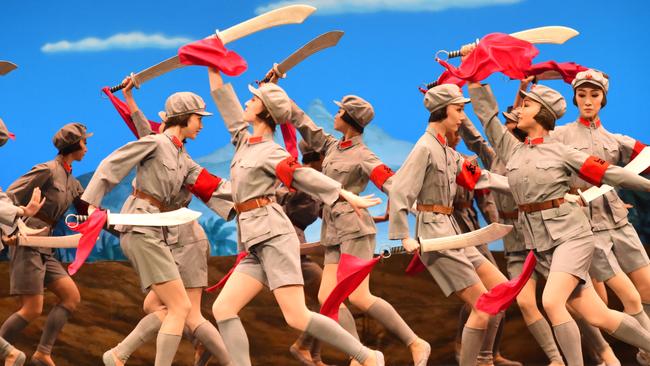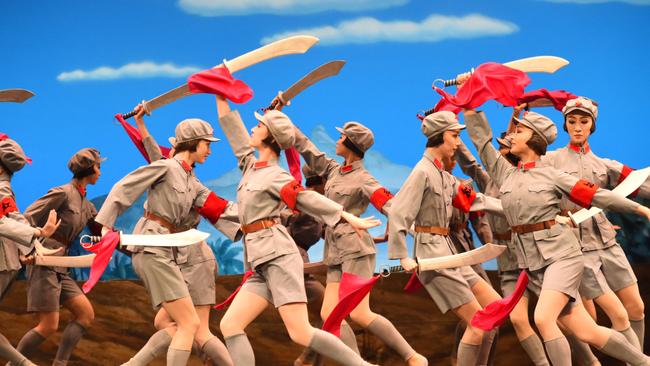
Mao Zedong was then at his home in Zhongnanhai at the heart of the city, preparing to greet his rare and important visitor by squeezing into a new suit and shoes – he had become bloated while invalided – and having his hair cut for the first time in five months. The encounter between two such vastly different people – and peoples – resembled in its strangeness the sci-fi spectacle of the first moon landing less than three years earlier.
This was a historic meeting, no doubt about that. Mao told Nixon: “I like to deal with rightists. They say what they really think – not like the leftists, who say one thing and mean another.”
As a result of Nixon’s visit, the US recognised the People’s Republic as the “one China”, while China in time helped the US slip out of its Vietnam imbroglio.
They formed diplomatic common cause against the Soviet Union, helping hasten its downfall less than 20 years later. Appearances, as symbolised by the leaders’ fastidiousness, also mattered mightily. Each side invested heavily then and thereafter in attempting to control how they were seen by the other.
On their second day in Beijing, Richard and Pat Nixon were taken by Mao’s fourth wife, Jiang Qing, to view the revolutionary ballet The Red Detachment of Women. When the US president asked who had composed it, Jiang – infamous as one of the “Gang of Four” and the ballet’s chief architect – responded that it had been “created by the masses”.

Such false impressions and wishful thinking became a pervasive aspect of the relationship, which burgeoned more rapidly and broadly than Nixon or Mao might have imagined possible.
In some respects China became – especially for Big Business USA – one great Potemkin village, like the fake model settlement erected, then dismantled and reassembled by Grigory Potemkin to keep impressing his former lover, Empress Catherine the Great, on her travels through the Russian countryside.
Despite what Mao told Nixon about straight-talking, many truths remained hidden from sight – thanks partly to the wishful thinking of many of the Americans and others who started flocking to the PRC, especially after Mao went to meet Marx four years later, and Deng Xiaoping opened some doors to foreign corporations.
For most of the ensuing four decades, during which red “Potemkin” carpets were worn threadbare with overuse, the West praised China’s economic development as a victory not only for capitalism and for Western technology, but chiefly for its ruling communist party, crediting it, in its own terms, for “raising hundreds of millions out of poverty”, something essentially achieved by the hard work and savings of Chinese individuals and families.

Westerners saw the modernity, and assumed a commonality, often failing to comprehend what they were actually seeing, even when emblazoned in public. Entering the Forbidden City from Tiananmen Square, visitors gazed up at a massive portrait of Mao, but many discounted it as a quaint nod to a communist past, as though Mao were an emperor from a long-ago dynasty, a tourism prop.
What, they wondered, could that era of bicycles and safari suits have to do with the futuristic skyline of 21st-century Beijing?
But perceptions can of course be designed to mislead. Many Chinese gardens feature the clever device called zhang jing – “blocked view” or “screened scenery” – by which, even in a confined space, the visitor encounters new, formerly hidden vistas.
So also with China’s biggest landscape, its national story. Many Westerners preferred to disregard the obvious – the party’s continuing, pervasive and sometimes cruel rule – because it did not conform with their belief that modernity automatically displaces communism, as a rock thrown into a garden pool displaces water.
When, living in Beijing as this newspaper’s correspondent, I was invited to talk to visiting groups from Australia, my remarks on party governance were often met by puzzlement and even downright rejection of its relevance to “modern China”.
The insightful American writer James Mann said in his 2007 book The China Fantasy, which launched a realistic reassessment of the party’s true durability and intent, that American or European corporate or government leaders who dealt regularly with the country then, often fostered “an elaborate set of illusions about China, centred on the belief that commerce will lead inevitably to political change and democracy”.
Such illusions should have been shattered by Xi Jinping’s rather more repressive “New Era” China, with its claim to comprise “a new form of human civilisation” which has “broken ‘Western-centrism’ ” and is ushering the world along “a new path”.
How ironic that today it is Taiwan – about which Australia, in recognising Beijing diplomatically on December 21 1972, merely “acknowledged the position of the Chinese government” that it was a PRC province – that is modelling the most clearly contrasting path to China’s. Taiwan was in 1972 a one-party military dictatorship, but is now perhaps the most progressive liberal democracy, trumping even Jacinda Ardern’s New Zealand.
The Journey to the East that Nixon inaugurated thus remains a work in progress. Its ultimate destination, in terms of the encounter between authoritarianism and freedom, remains enticingly and troublingly elusive.
Rowan Callick is an Industry Fellow at Griffith University’s Asia Institute.




Richard Nixon plastered thick makeup over his customary six- o’clock shadow before he alighted from the Boeing 707 Air Force One in Beijing on February 21, 1972, live on television.